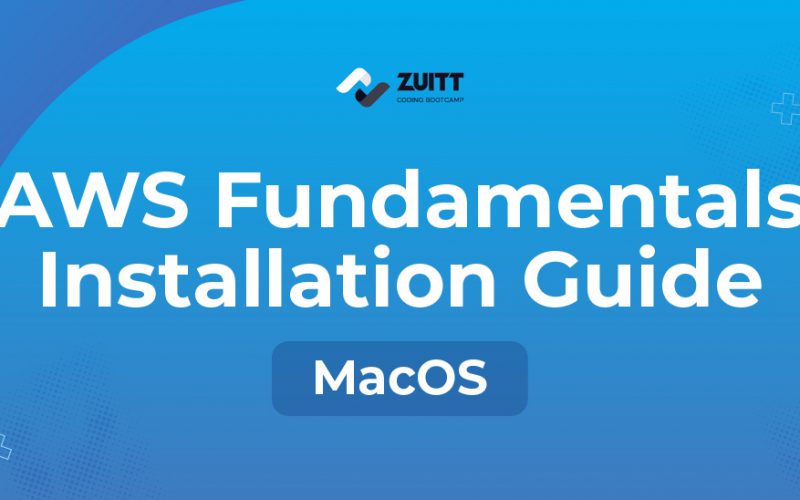Note:
- If the version number installed in your device is lower than the version provided in the screenshots, follow the steps below to install the updated version of the applications.
- If an updated version of the above provided applications are already installed in your device, the following instructions will still work with minor differences in the version of the app you’re shown in the output which should have no impact during the course of the bootcamp.
Allow Apps from the App Store and Identified Developers
Reference: https://support.apple.com/en-us/HT202491
To allow installation from the App Store and Identified Developers on your Mac, choose Apple Menu > System Settings, click Privacy & Security, then scroll down to the Security.
Select App Store and identified developers under the header “Allow apps downloaded from.”

Homebrew
Click the Spotlight Search located at the top-right of your screen (the magnifying glass icon at the right side of the current time) then search and open a program named Terminal.
Inside the Terminal program, copy-paste the code below then press Enter.
/bin/bash -c "$(curl -fsSL https://raw.githubusercontent.com/Homebrew/install/HEAD/install.sh)"The terminal should now look like this:

Press Enter and type your password to continue then wait for the install process to finish.
The executed command will install utility tools (specifically for MacOS devices) that will be used in the bootcamp.


Sample screenshots of the outputs in the Terminal while the command is running.

To verify that the installation process is successful, type the following in the Terminal:
| brew -v |
It should output the following:

Git was also installed along the way. To confirm, type git –version and the output should be like this:

If the version number is higher than in the screenshot, it means that it is more updated.
After verifying the success of the install process, keep the Terminal in the dock by right-clicking the program in the dock and choosing the Keep in Dock option.

Google Chrome
Open a web browser (initially Safari) and go to https://google.com/chrome. On the page, click the Download Chrome button.
Note: If you have an iMac or Macbook with the Apple Silicon (M1 or later) chip, click the Mac with Apple chip button. Otherwise, click the Mac with Intel chip button.

After downloading, open the DMG file.

After opening the DMG file, drag the Google Chrome icon to your Applications.

After that, wait for the transfer to finish.

Click the Spotlight Search located at the top-right of your screen (the magnifying glass icon at the right side of the current time) then search and open Google Chrome.
Google Chrome should open normally.

Keep the Google Chrome in the dock by right-clicking the program in the dock and choosing the Keep in Dock option.

AWS CLI
Click the Spotlight Search located at the top-right of your screen (the magnifying glass icon at the right side of the current time) then search and open a program named Terminal.
Inside the Terminal program, copy-paste the code below then press Enter to download the installer.
| curl “https://awscli.amazonaws.com/AWSCLIV2.pkg” -o “AWSCLIV2.pkg” |
Copy-paste the following code below to execute the installer.
| sudo installer -pkg AWSCLIV2.pkg -target / |
To verify that the installation process is successful, type the following in the Terminal:
| aws –version |
It should output something similar to the following:

Python
Use the installer
MacOS machines come installed with Python which is used by the OS for running certain applications, however this step is also necessary to ensure an updated version of Python is installed.
Execute the downloaded installer.

Click on Continue in the installation window until a prompt appears informing you to agree to the terms of the software license agreement then click on Agree


After agreeing to the terms of the software license, click on Install and wait for the installation to finish. If a prompt asking for your password appears, enter your device password and click on Install Software.


After the installation has completed, click on Close

Verify installation
To verify the installation of Python, open a terminal window and trigger the command python3 –version to check the currently installed version of Python 3.

NOTE: If PIP is not found, proceed with the PIP installation.
PIP
PIP is a package management system used to install and manage software packages written in Python.
- Open a terminal window.
- Check for the current PIP version by typing in the command below in your terminal.
- pip –version
- If the pip version is outdated, invoke the following command to update pip:
- For macOS and Linux:
- pip install –upgrade pip
- For macOS and Linux:
- If there is no PIP installed, proceed with the following steps:
- For macOS and Linux:
- Open a terminal window.
- Download “get-pip.py” by invoking the command:
- curl https://bootstrap.pypa.io/get-pip.py -o get-pip.py
- For macOS and Linux:
- Run the script with the Python interpreter to install PIP:
- python get-pip.py
- Verify the installation by running the following command:
- pip –version
Note that you may need administrative privileges or use sudo depending on your system configuration.
If you’ve stumbled upon this blog post and aren’t a bootcamper, you can begin your bootcamp journey with Zuitt by clicking this link:



